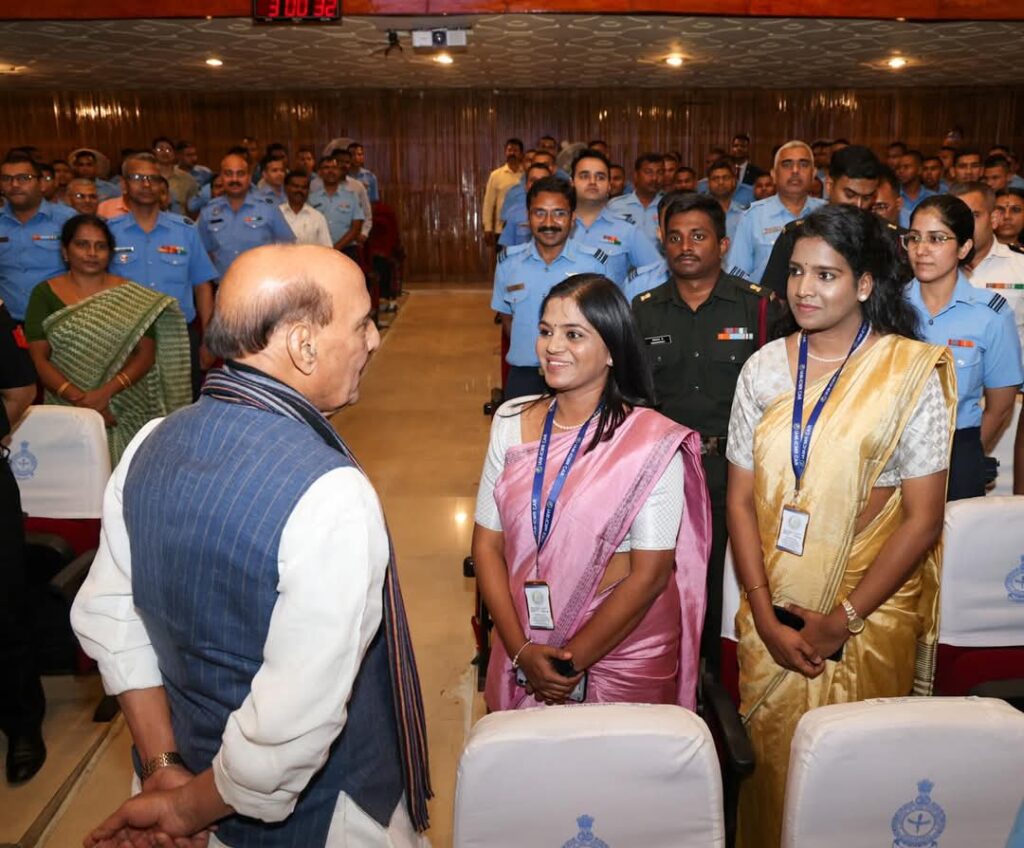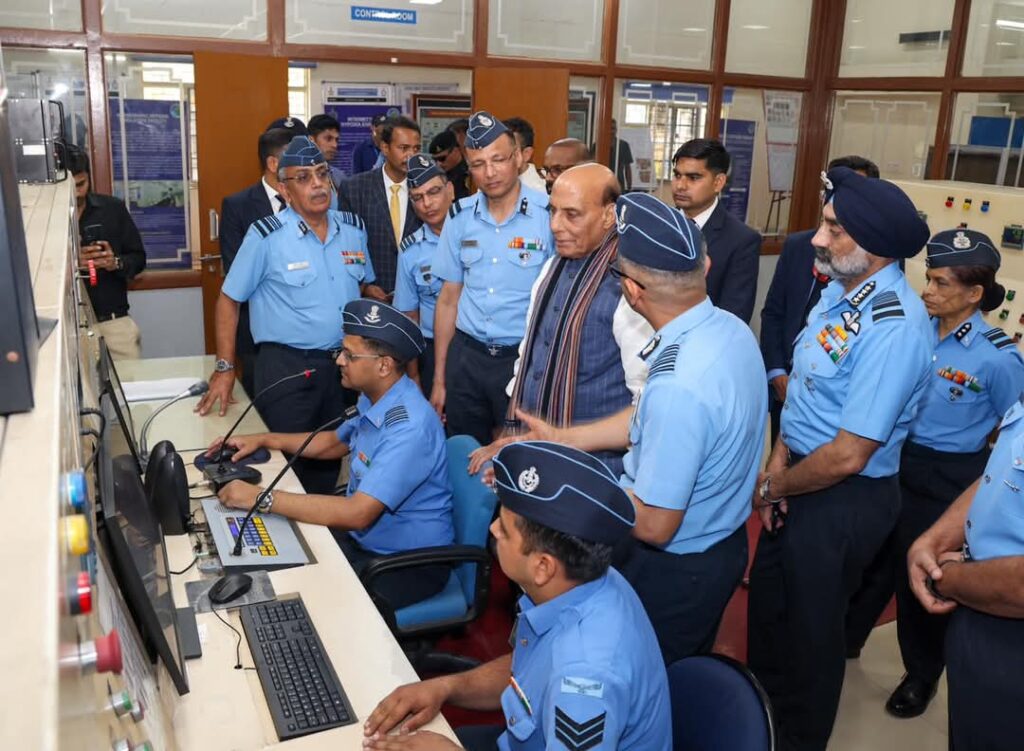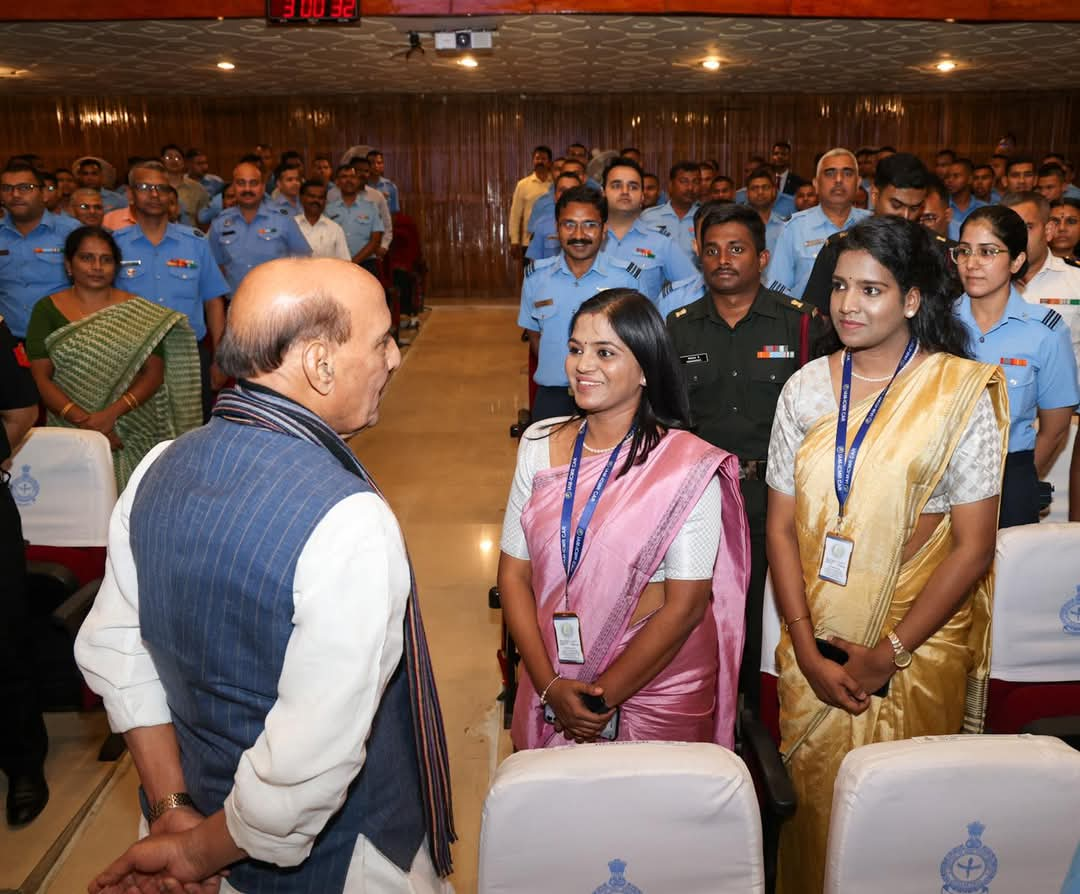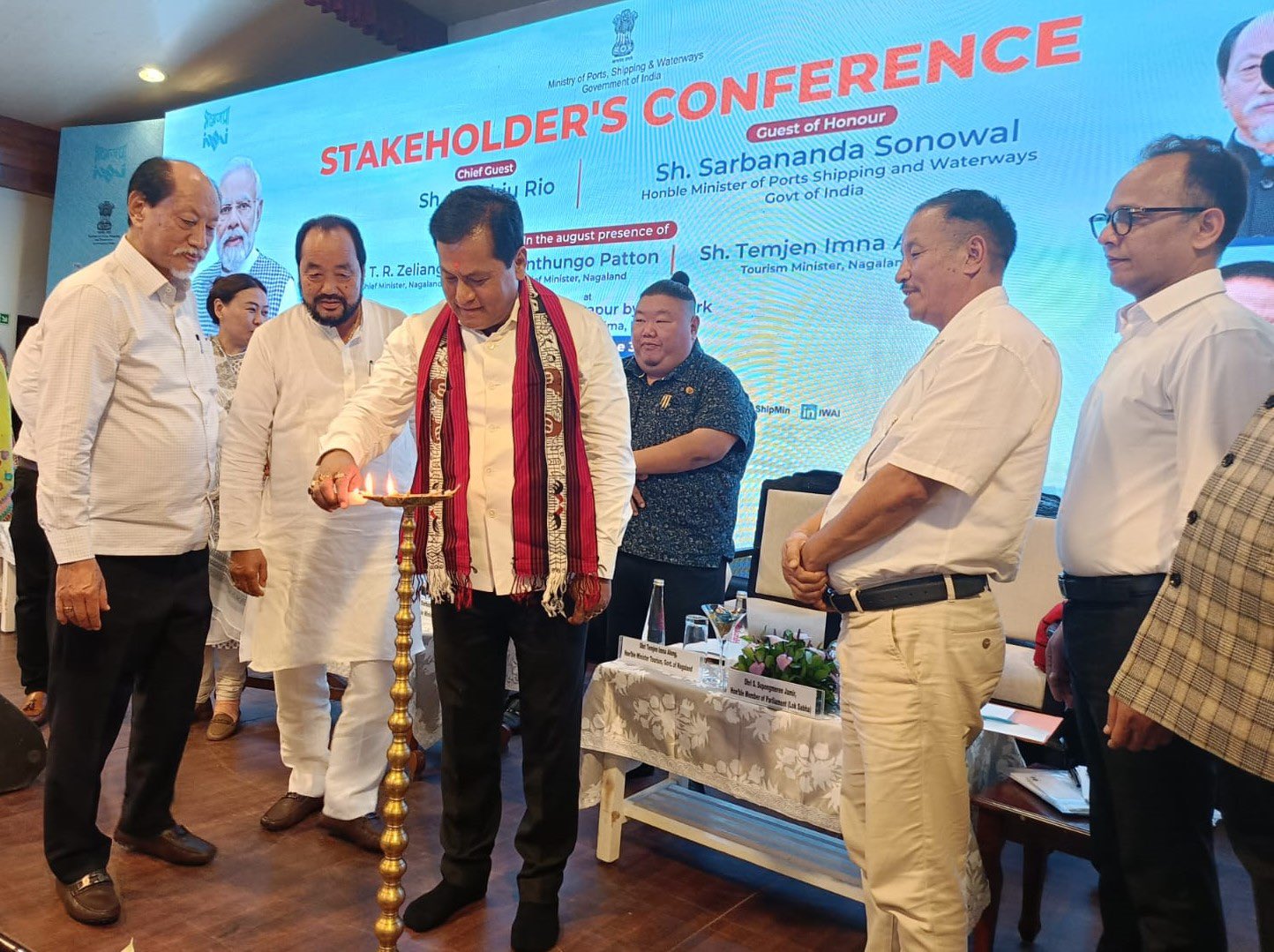Rajnath Singh Becomes First Defense Mantri to Visit IAF’s Institute of Aerospace Medicine in Bengaluru.
Launches ICMR Extramural Research Project Focused on Space Psychology and Calls for Increased R&D in Aerospace Challenges.
Bengaluru, Karnataka :
In a historic visit, Defense Minister Rajnath Singh became the first-ever Defense Minister to visit the Institute of Aerospace Medicine (IAM) of the Indian Air Force (IAF) in Bengaluru on March 9, 2025. During his visit, he was briefed on IAM’s crucial role in pilot training, medical evaluations, and aeromedical research.

The Defense Minister also had the opportunity to inspect several advanced simulators used for high-performance training. These included the Dynamic Flight Simulator and High-Performance Human Centrifuge, which are integral to training fighter pilots for high-G flight conditions, as well as the Spatial Disorientation Simulator, which helps train Armed Forces pilots to mitigate the risk of spatial disorientation during flight.
Additionally, Rajnath Singh launched the Indian Council of Medical Research (ICMR) Extramural Research Project at IAM. The project, titled Centre for Advanced Research on Space Psychology, is dedicated to studying the selection and behavioral health training of astronauts and astronaut candidates for Indian space missions.
Addressing the gathering, Rajnath Singh emphasized the increasing importance of aerospace medicine in light of growing air and space traffic. He noted that space has become a major domain in modern warfare, with India making significant strides in technologies such as anti-satellite capabilities. With India also emerging as the fastest-growing aviation market globally, the Raksha Mantri stressed the need for continued advancements in aerospace medicine to address challenges such as micro-gravity, radiation, isolation, and the mental and physical health of individuals in space.
He further pointed out that research and development (R&D) in high-tech fields like aerospace medicine have far-reaching benefits across multiple sectors. “Research in any high-end complex technology provides benefits to many fields, and we must continue to enhance R&D efforts to keep pace with the evolving needs of aerospace medicine,” he stated.

Rajnath Singh commended IAM for its contributions to India’s self-reliance in aerospace. He highlighted the institute’s significant role in providing aero-medical consultancy for the design and development of various military aircraft, including the Advanced Light Helicopter, Light Utility Helicopter, Light Combat Helicopter, and the Light Combat Aircraft Tejas. IAM’s advisory role in the development of the country’s state-of-the-art Advanced Medium Combat Aircraft was also noted.
He reiterated that the aerospace sector is poised for unprecedented growth, which will be central to realizing India’s vision of a “Viksit Bharat” (Developed India) by 2047. He emphasized that this growth would be pivotal for technological advancements, national security, and economic progress, particularly in areas such as satellite launches, interplanetary missions, and commercial space services.
The visit was attended by senior officials, including Chief of the Air Staff Air Chief Marshal AP Singh, Air Marshal Nagesh Kapoor, Air Marshal Sandeep Thareja, and other top IAF officers.


